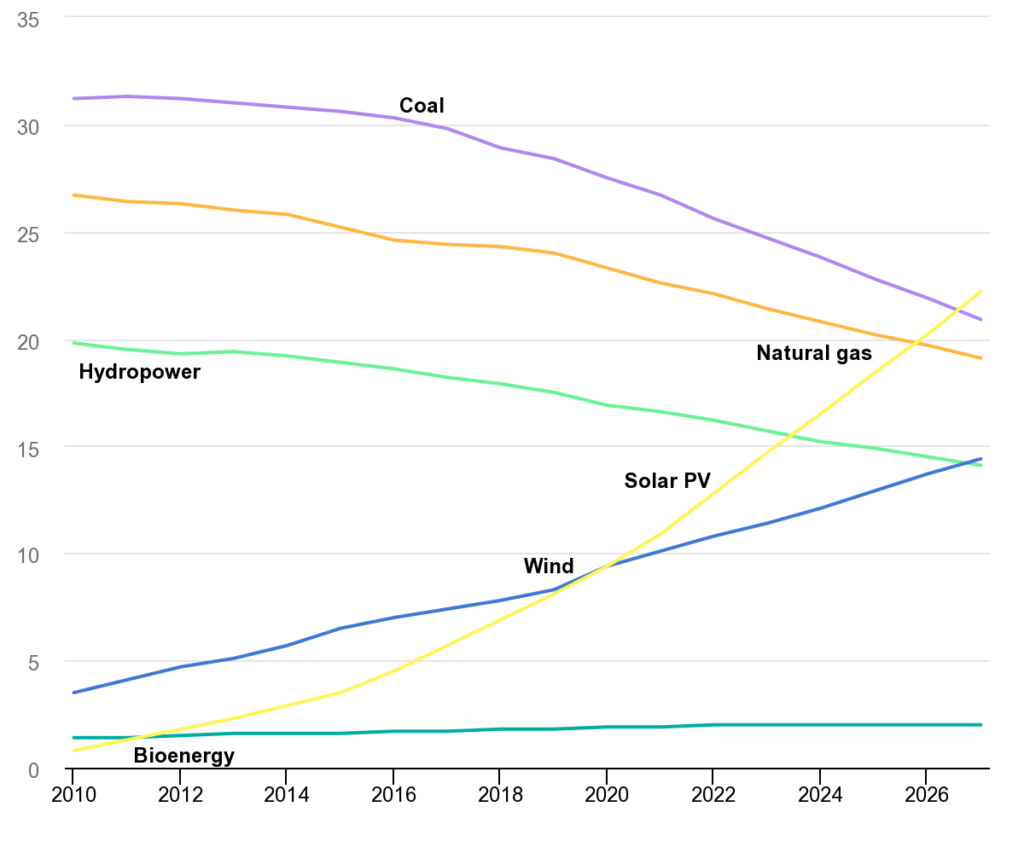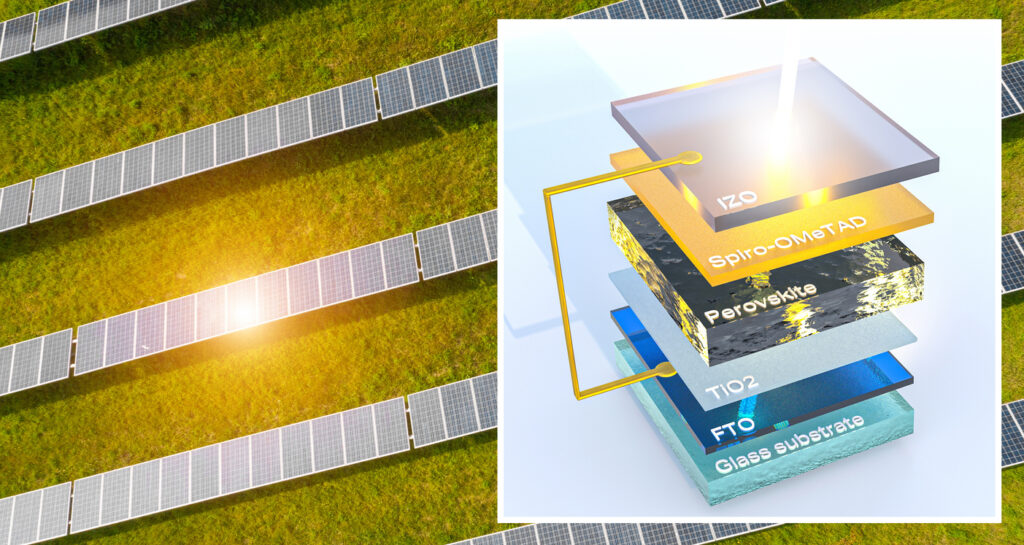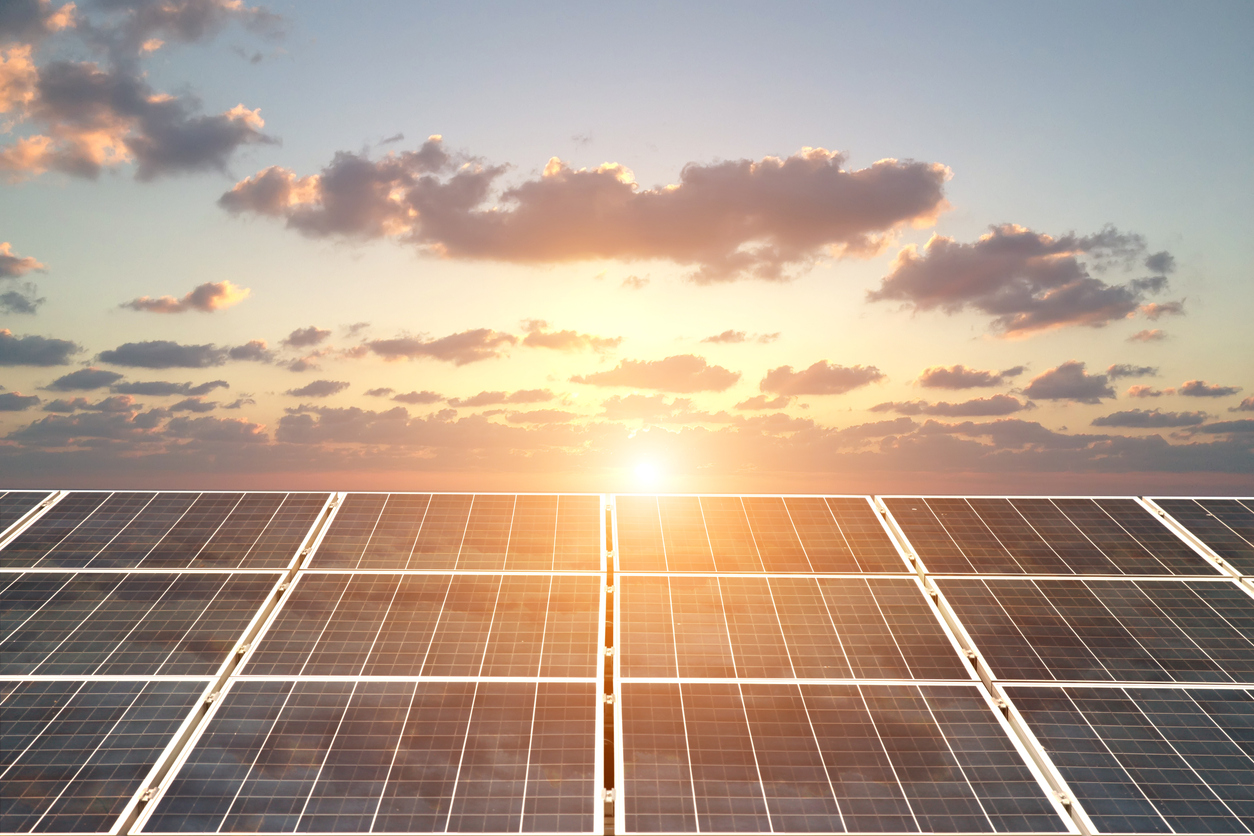In recent years, the world has witnessed a remarkable shift towards renewable energy sources, with solar power emerging as a frontrunner in the clean energy revolution.
Solar panels, which harness the sun’s abundant energy, have undergone significant advancements since their inception, and annual PV capacity additions increase every year, with plans to exceed natural gas by 2026 and coal by 2027. However, the question is whether solar panels will be better at capturing sunlight, as currently the silicon-based solar panels’ efficiency ranges from around 15% to 20% of solar energy converting into useful power.
This article delves into the world of renewable energy, in particular solar panel technology, and explores the exciting prospects for enhancing sunlight capture efficiency.
Solar power and other renewables
Solar energy is the most abundant and accessible source of renewable energy. As per International Energy Agency (IEA) data, almost 1 300 TWh of solar PV energy was generated in 2022, a record-breaking rise of 270 TWh (up 26%). 2022 also saw solar energy outpace wind generation for the first time in history and showed the highest absolute generation growth of all renewable technologies. This generation growth rate is in line with what the Net Zero Emissions by 2050 Scenario anticipates for the years 2023 to 2030.

The current state of solar panel efficiency
Solar panels, also known as photovoltaic (PV) panels, have made significant strides in efficiency over the past few decades. Traditional silicon-based solar panels have reached a point of commercial viability, with many installations already dotting rooftops and landscapes around the world. The efficiency of these panels, as mentioned in the introduction, measured by their ability to convert sunlight into electricity, typically ranges from 15% to 20%.
While these numbers are impressive, the quest for improved efficiency remains ongoing. Researchers and engineers are continuously exploring innovative techniques to make solar panels even more efficient, affordable, and environmentally friendly.
Cutting-edge solar panel technologies
New designs and layers enable higher efficiency and harvesting of more energy. While solar cells made from silicon only convert a narrow frequency band of sunlight, the use of newer materials enables better absorption of the light.
Perovskite solar cells
Perovskite, a titanium and calcium crystal, is more effective at absorbing light that is closer to the infrared spectrum. These lightweight and flexible cells can be manufactured using low-cost processes, making them an attractive option for future solar panel designs.
Perovskite solar cells have the potential to produce higher efficiency than silicon-based solar cells. Researchers are continuously refining perovskite formulations to enhance stability and performance, potentially pushing efficiency levels beyond the current standards. Proof of this is in Switzerland, where researchers at the Swiss Federal Institute of Technology (EPFL) and the Swiss Centre for Electronics and Microtechnology (CSEM) successfully surpassed the 30% efficiency threshold for perovskite-on-silicon tandem solar cells for the first time.

These high-efficiency results will now require further R&D to allow their scaling up onto larger surface areas and to ensure that these new cells can maintain a stable power output on our rooftops and elsewhere over a standard lifetime,
– Quentin Jeangros of CSEM
Find out more about perovskite solar cells in our article about top 5 innovative solar technologies.
Tandem solar cells
One promising avenue for increasing solar panel efficiency involves the development of tandem solar cells. These cells stack two or multiple layers of different semiconductor materials to capture a broader spectrum of sunlight. It may include a mix of currently available solar cells made of perovskites, Si, GaAs, CIGS, etc.
For instance, in Germany, teams from Helmholtz Centre Berlin (HZB) and the Institute for Solar Research in Hamelin (ISFH) unveiled PERC (Passivated Emitter and Rear Contact) photovoltaic cells which are considered the most efficient on the market, with a maximum efficiency of 23%. However, German scientists are confident that the new tandem PERC/POLO cells could achieve 29.5%.
Outside of Europe, researchers in Saudi Arabia have developed a novel type of solar cell breaking the record for the highest efficiency with an unprecedented rate of 33.7%. It is a tandem solar cell based on the combination of silicon and perovskite. While the silicon layer absorbs and converts mostly infrared light into electricity, the perovskite layer absorbs visible light, making it more efficient than conventional cells.
“We hope that our new achievement will contribute to accelerating the green energy transition.“
– Erkan Aydin, research scientists at the King Abdullah University of Science and Technology (KAUST)
Bifacial solar panels
Photovoltaic solar cells with the ability to generate electricity when irradiated on both of their surfaces are known as bifacial solar panels. In other words, bifacial solar panels have the ability to capture sunlight from both sides, effectively utilising sunlight reflected off surfaces such as rooftops or the ground (note: they function best when installed at ground level). Some bifacial panels are capable of increasing energy production by up to 30%. The exact amount depends on the environmental surroundings.
Quantum Dots solar cells
Scientists are delving into the realm of nanotechnology by utilising semiconductor nanostructures for solar energy, creating highly-efficient solar panels with intricate nanostructures and quantum dots. A quantum dot solar cell is a solar cell that uses quantum dots to absorb the photovoltaic material.
As per National Renewable Energy Laboratory, quantum dots have the potential to dramatically (possibly even doubling it in some devices) increase the efficiency of converting sunlight into power. These structures can manipulate light at the nanoscale, allowing for better absorption and increased energy conversion efficiency. As research in this field progresses, we may witness solar panels capable of harnessing sunlight more effectively than ever before.
Conclusion
With new advanced technologies and different types of solar cells, solar power and solar panels will become more and more popular. The development of new solar panels has the ability to not only improve the efficiency of capturing sunlight but also to reshape the power industry. As the world continues its transition towards clean energy sources, the evolution of solar panels will be part of transitioning into a sustainable and energy-abundant future.











